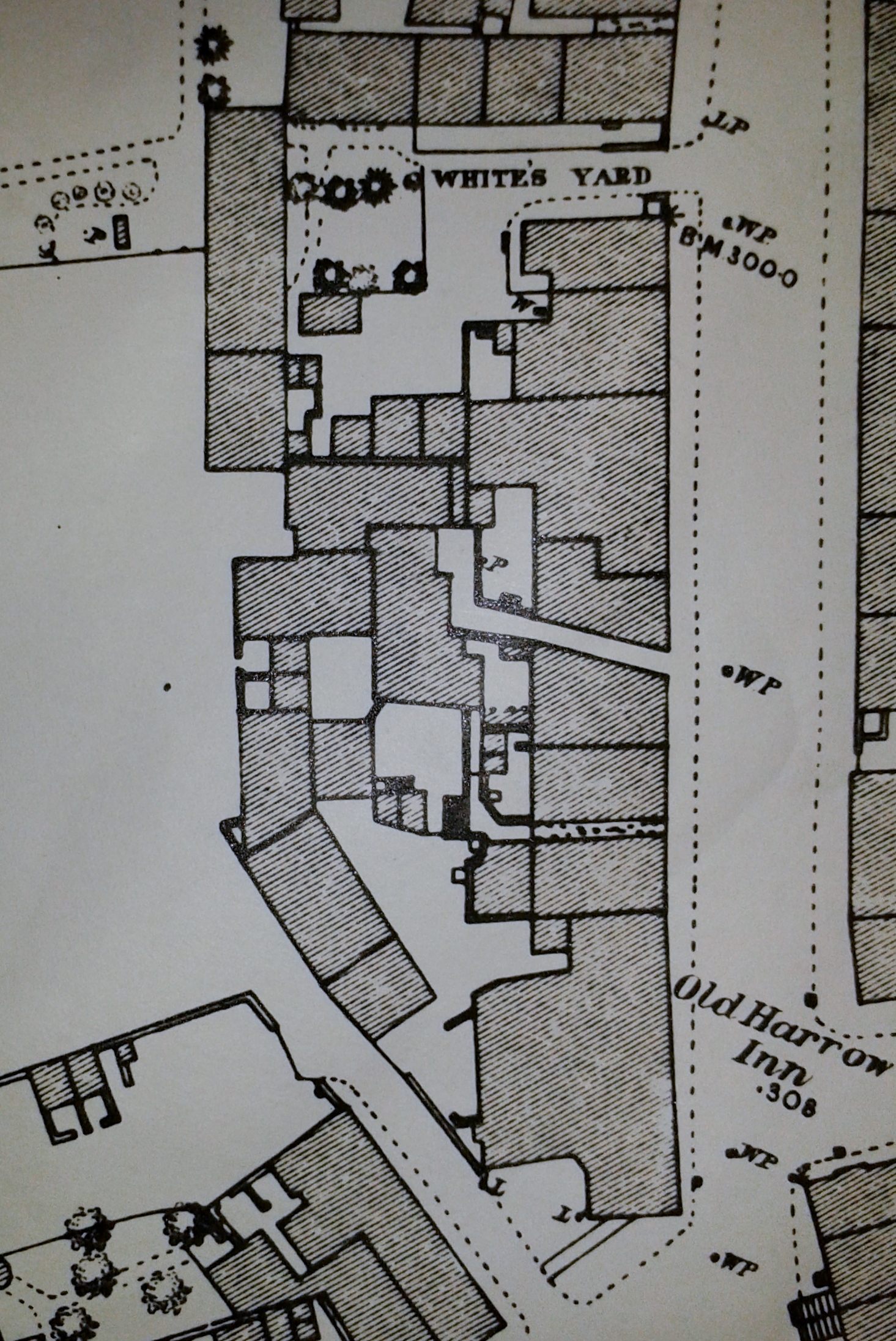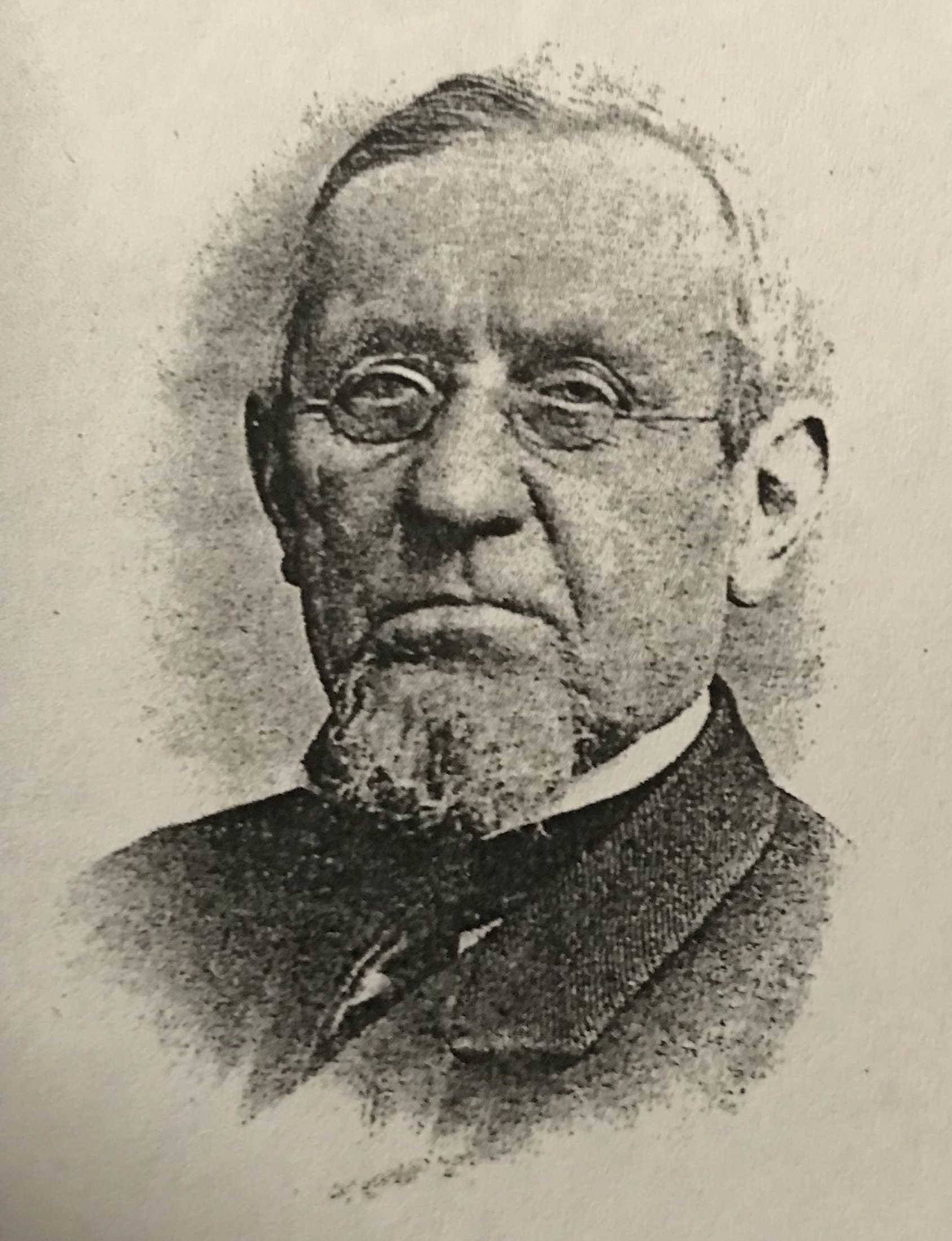As the Victorian era began, Bath Street would be a sight to behold, particularly because of its topography, and especially on this west side. There were high banks on both sides but the one on this side was particularly steep and sheer … perhaps very frightening. Even today you will have noticed several ‘jitties’, leading up from this main street, westwards, and notice how steep they are. Any buildings would sit on the brow of this ‘cliff’. Just imagine navigating the area without as many buildings today and without metalled steps on these paths.
And try to imagine also what it would be like when it rained and the water came down from these banks into the main street …. where would it go, and in which direction ??
And as the Victorian era was drawing to a close, on Sunday May 30th, 1897, at about 5.40 in the afternoon, Thomas Ward began riding down Bath Street on his bike. The street was just as steep as it always had been, though Thomas didn’t know how steep it was — he had never been in the town before. His bike, which he had borrowed from a pal, had no brakes. After narrowly avoiding a perambulator, a cart and some children in his way, the cyclist took his feet off the peddles and ‘furiously‘ sped down the street. Witnesses to his journey were P.C. Spencer and hairdresser Harry Henson who were both obviously very adept at estimating the speed of a runaway bicycle; they agreed that Thomas was travelling at about 16 mph. The police constable shouted for him to stop but then had to wait until Thomas had reached the bottom of Bath Street before he could come to rest and the P.C. could ‘book him’.
Fined 2/6d and 7/6d costs.
—————————————————————————————————————————————————-
So leaving the Market Place behind, we are now walking northwards, along the west side of Bath Street, towards White’s Yard. (On the map, from bottom to top, the west side is on our left)
the top end of Bath Street about 1880
Just after the Old Harrow Inn, in the 1840s we find the shop of confectioner Thomas Calladine, with his first wife Hannah (nee Henshaw) and two children (though the younger would die in infancy). His next-door neighbour was butcher James Alexander Barker, with his wife Matilda (nee Ball) though they were soon to move into the New Street (alias Station Road) area. Later, in 1860, the first house was occupied by master cooper Thomas Stanesby, who remained there until about 1865, before moving to Derby; tailor and woollen draper William Manners then moved in and stayed until about 1882 before moving to alternative premises in Bath Street.
…………………………………………………………………………………………………………………………………….
At this point Adeline’s letters describe the next house as occupied by tailor James Turton, followed by William Rose. The census and trade directories indicate that it was perhaps the other way round … which is the order I have adopted.
William Rose (1817-1894)
“Mr. Rose had the next as a shoe shop. He was also a rate collector”. When the houses in Ilkeston were numbered for the 1871 census, those in Bath Street had consecutive numbers, starting at the Market Place end on the west side. Thus William Rose lived at Number 2 (which was opposite the first offices of the Pioneer newspaper.) By 1887 the houses had all been renumbered and on this side of Bath Street had odd numbers only, starting at number 1.
William Rose, a son of William, officer of excise (tax collector), and Sarah (nee Robinson) and born in Wirksworth in May 1817, was in 1834 an apprentice to Matthew Hobson, grocer and draper of Market Place.
Five years later he went to Manchester to trade as a grocer and there he married Mary Ann Walker, daughter of Paul, shoemaker of Market Place, and Eliza (nee Varley) in February 1843.
Their daughter Eliza was born in that city in 1844 before the family returned to Ilkeston where son Thomas Robinson Rose was born in June 1846.
Puzzle alert! William appears on the 1841 census at Hardman Street in Manchester, occupation grocer.
He is with Sarah who may be his first wife.
Who was Sarah?
Answer ? It could be Sarah Beswick who married William Rose at Manchester, December 6th 1840. She died in November 1842, aged 20.
On his return to Ilkeston, William traded as a shoemaker in East Street and then in Bath Street, but took out a licence as an auctioneer in 1857 and is recorded as such in the 1861 census.
In June 1866 he declared that he had commenced active business again as ‘auctioneer, trade and probate valuer, accountant and house agent’ (IP)
In October 1867 he became the Collector of Poor Law Rates for the Parish of Ilkeston after the resignation of Richard Vickerstaff, moved to live in Nottingham Road in the early 1870’s and in the mid 1880’s went to Ivy House at 12 Graham Street.
The poor rate was a separate tax on property levied in each parish and the income was used to provide poor relief. Only in the twentieth cenury was this incorporated into the general local rates paid by each household.
In September 1893 William resigned as Collector of the Poor Rates for Ilkeston, after 26 years service. The Guardians of the Basford Board, for whom he worked, “expressed their satisfaction of the manner in which Mr. Rose had always fulfilled his duties, and expressed their regret that he was unable to occupy his post through failing health” … his poor health leading to his death just a few months later. William was succeeded as Poor Rate Collector by John Attenborough Walker, grandson of Ilkeston’s one-time Post Master, Paul Walker, and son of Robert Walker. At that time the Collector’s salary was £110 p.a. John Attenborough managed to get it increased by £20 in 1896.
Mary Ann Rose died on March 30th, 1894 at Graham Street and was followed by husband William barely one month later, on May 3rd, 1894, just three days before his 77th birthday.
“William Rose had one daughter married to Mr. Phillips, who was away in India. They had one little girl”. … this daughter was Eliza
Eliza Rose married Francis Phillips on February 13th, 1865 and Adeline recalls ‘one little girl’ — their daughter Mary Ann Rosa, born in 1866.
Gap alert! Why and when was Francis ‘away in India’?
On the 1871 census Eliza is living at Bath Street with her parents and her daughter Mary Ann Rosa born in 1866.
There were at least two other Phillips children, William Rose Phillips (1872) and Thomas Rose Phillips (1874).
In November 1887 Mary Ann Rosa Phillips married draper’s assistant Harry Simpson.
Son of William and Mary Ann, Thomas Robinson Rose married Susannah Chadwick, daughter of James, grocer and ironmonger of Bath Street, and Ann (nee Brentnall) in November 1865.
After the births of their children William George Hickton, Amelia Florence and Florence Gertrude, the family left Ilkeston in the early 1870’s and eventually arrived at Hove, Sussex, where Thomas Robinson practiced as a surveyor.
They later returned to live with Thomas’s parents in Graham Street.
Susannah died there – at number 12 – in October 1908, aged 62.
By 1874 William and his family had left Bath Street and these premises were then taken by Samuel Fretwell, younger brother of blacksmith Job Fretwell of South Street. Samuel was still there in 1881 but moved out shortly after this..
………………………………………………………………………………………………………………………………………..
James Turton, tailor (1835-1882)
“Returning down Bath Street on the West side, was Mr. Turton’s tailor’s shop”. This was number 3 Bath Street in 1871 but after renumbering was number 5.
The shop belonged to James Turton, son of tailor Samuel and his first wife Frances (nee Pollard), of Anchor Row and later Pimlico.
He married Hannah Fletcher, the daughter of Nottingham livery stable keeper and cab driver William Daniel Fletcher and Elizabeth (nee Holland?) in March 1858 and the 1861 census shows the couple at West’s Yard by the Market Inn with one-year old son Daniel Fletcher Turton.
However the family was soon established at the top of Bath Street and remained there up to and after the death of James — from cirrhosis in May 1882, aged 46.
At the end of the century his widow Hannah was living with her youngest child Tom Fletcher Turton in Salford, Lancashire, while another son — James junior — was now trading as a hairdresser at the Bath Street home.
…………………………………………………………………………………………………………………………………
William Fritchley (1828-1866) again!
Adeline points out that “the next private house was above Mr. Solomon Beardsley’s baker’s shop. Mr. and Mrs. William Fritchley lived in it. Mr. Fritchley was a joiner, who left a widow and one son”.
We met the parents of joiner William Fritchley in New Street.
He was one of at least 11 children of Cossall-born farmer and butcher William senior and Ann (nee Dodson), and married Sarah Jane Bennett, daughter of John and Maria of the White Swan Inn in Spondon, in March 1853.
In that same year their son Frederick John was born, followed by Thomas Henry eight years later and then William Dodson in the following year.
When William died in Bath Street in December 1866 ‘after a long and severe illness’ the family left Ilkeston to settle eventually at 25 Crompton Street in Derby and remained there into the next century.
………………………………………………………………………………………………………………………………
Which brings us to Solomon Beardsley’s baker’s shop. The Grand Tour.



